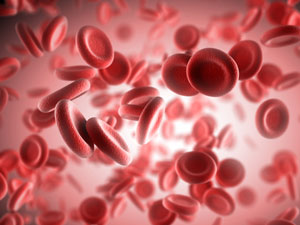Malaria is a highly infectious and potentially fatal mosquito-borne disease. It affects millions of people each year; however, no effective vaccines exist. Now, scientists from Spain have discovered a new strategy to target the disease.
Plasmodium falciparum, the most deadly species of malaria parasite, infects red blood cells (RBCs) and changes their structure. The infected RBCs then bind to the walls of blood vessels in tissues, such as the brain and lungs, through a phenomenon known as sequestration. This allows the malaria parasites to replicate. Infected RBCs can also bind to non-infected RBCs, forming clumps known as rosettes, which narrows the blood vessels and can be fatal. The formation of rosettes is thought to be mediated by a protein called PfEMP1, which is expressed at the surface of infected RBCs. So, disrupting the activity of this protein could help prevent rosette formation and the onset of severe malaria.

Red blood cells infected with the malaria parasite can clump together and cause deadly blockages © Shutterstock
Interested to know more? Read the full article in Chemistry World here…
Read the article from Nanoscale:
Demonstration of specific binding of heparin to Plasmodium falciparum-infected vs. non-infected red blood cells by single-molecule force spectroscopy
Juan José Valle-Delgado , Patricia Urbán and Xavier Fernàndez-Busquets
Nanoscale, 2013, Advance Article
DOI: 10.1039/C2NR32821F










